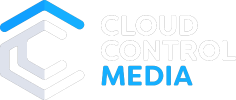How to Design Landing Pages for Marketing That Convert

In the digital marketplace, your landing page is more than just a web page — it’s a transactional, promotional page where a consumer can “land” after interacting with a digital marketing campaign. Those campaigns may be in the form of a Google search result; social media or banner display ad; email, or even an offline QR code. On the landing page, the user is asked to take a next step such as entering their contact info or making a call. The best landing pages combine art and science, balancing design, psychology, user experience, and strategic messaging.
A compelling landing page is clear, visually appealing, and focused on conversion. It has a strong headline, concise copy, clean design, and a clear value proposition. Your landing page needs to capture your audience’s attention and entice them to learn more about your product, services, or mission. Every choice you make on your landing page should be intentional and goal oriented. To build out landing pages that convert, you need to take 13 important actions:
1. Landing Pages Need a Singular Call to Action
Your landing page has a singular purpose. Whether that purpose is to get the user to ‘learn more,’ ‘buy now,’ or ‘download,’ your copy should speak directly to that purpose. Don’t overwhelm users with too many options. Eliminate all external links. Rather, lead them where you want them to go and use your page elements to reinforce your single-minded goal.
2. Landing Pages Connect to Their Ad
The message on your landing page must match the search engine marketing ad that drove the user there. There needs to be consistency between the ad’s promise and the landing page’s content. This connection improves user experience, trust, and conversion rates by reinforcing expectations. A disconnect can cause confusion, increase bounce rates, and waste ad spend. Consistency also boosts Google Quality Score, potentially lowering ad costs.
3. Write Precise Landing Page Copy
Your headline is the gateway to engagement. It needs to be bold, direct, and immediately relevant to the visitor’s needs. Think of it as a promise — a concise statement that captures the essence of your product or service offering, one that speaks directly to the visitor’s deepest desires or most pressing pain-points. From there, provide additional stopping power to solidify interest and compel users to continue reading. And of course, use succinct, compelling copy that tells your story.
4. Use Marketing Design Elements to Enhance Messaging
Compelling design guides the buyer journey, reinforces key messaging, improves readability, and helps to induce action. Among the creative marketing components you need to consider are:
- Brand consistent typography and color
- Bold fonts and contrasting colors to highlight key messages and CTAs
- Visual hierarchy that uses spacing and size to emphasize important content
- Images and videos to make messages more engaging and memorable
- White space for clean, clutter-free design
- Directional cues to direct users toward your CTAs
5. Employ Visual Storytelling and Design Strategy for Landing Pages
Design isn’t just about creating a look. It’s about creating a visual path to an eventual conversion by filling out a form and/or requesting more information. The most effective landing pages use visual hierarchy to guide the user’s eye exactly where you want it to go. This could mean strategically using color contrast, white space, typefaces, and design cues to draw attention to your key points or buttons.
6. Take a Persuasion Mindset with Landing Pages
Effective landing pages tap into fundamental psychological triggers—whether through customer testimonials, recognizable client messages or logos, or real-time indicators of popularity. People are naturally inclined to follow the herd, and demonstrating that others have trusted and benefited from your offer can be incredibly compelling.
7. Optimize Your Landing Page Call to Action
The call to action (CTA) is the beating heart of your landing page. It should be more than just a button with a single word. It’s the point where a viewer may decide to take action so use language that creates a sense of excitement and urgency.
8. Put Your Landing Page Call to Action Above the Fold
It can be a challenge to manage the limited of space you have above the fold, but conversion rates are higher when your form is close to the top of the hierarchy of the page. That way, the majority of visitors will see your CTA.
9. Use Short Forms in Your Landing Pages
Keep your forms as short as possible. Three to five fields is ideal, and they should relate to what the page offers and where the person is in their journey. You don’t want to have a form with eight fields on a page where you offer little in return or it’s someone’s first interaction with your organization, product, or service. On the other hand, if your target audience is filled with people who are further down the funnel or more invested, and you’ve established a level of trust, you may be able to ask them to provide more information.
10. Don’t Neglect the Technical Component for Landing Pages
Even the most beautifully designed landing page will fail if it doesn’t perform technically. Mobile responsiveness is non-negotiable in today’s multi-device world. Page load-speed can make or break your conversion rates since every second of delay can cost you potential customers. Minimize form fields to reduce friction, asking only for the most essential information.
11. Take a Continuous Improvement Mindset with Landing Pages
The most successful landing pages are never truly finished. Conversion rate optimization that uses A/B testing is your secret weapon. It allows you to continuously experiment with different headlines, imagery, CTA placements, and design elements. What works today might not work tomorrow, and the most successful digital marketers are those who embrace constant optimization.
12. Avoid Common Marketing Conversion Killers
Beware of the most common landing page mistakes. Cluttered design that overwhelms visitors, weak value propositions that fail to differentiate, and messaging that doesn’t align with the initial ad or link can all torpedo your conversion rates. Your landing page should feel like a natural, seamless continuation of the journey that brought the visitor there.
13. The Marketing Conversion Ecosystem and Landing Pages
Remember, your landing page doesn’t exist in isolation. It’s part of a broader ecosystem of marketing touchpoints. Every element—from the ad that brought the visitor to the page, to the design, to the follow-up communication—should feel cohesive and intentional.
Creating a high-converting landing page is about understanding human psychology, leveraging design principles, and maintaining a relentless focus on the visitor’s needs and desires. It’s a delicate balance of art and science, of intuition and data-driven optimization.
And your landing page is more than just a web page. It’s your digital sales representative, working 24/7 to transform casual visitors into committed customers.
To learn more about optimizing your landing page, connect with one of our subject matter experts today at success@cloudcontrolmedia.com.


